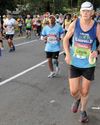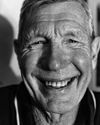Running, in moderation, is usually a healthy pursuit. But when we commit to high-mileage training, how seriously should we be about taking rest?

When trail star Ryan Sandes won the North Face TransGranCanaria (a 125km race through the mid-altitude areas on the Spanish island of Gran Canaria) at the start of the racing season in 2014, he was in the shape of his life.
In the same year, he trained for the Drakensberg Grand Traverse (a 209km Fastest Known Time (FKT) attempt) with adventurer and endurance athlete Ryno Griesel. Mileage is often hard to gauge with trail running, but the pair were training between 15 and 30 hours a week.
Sandes scored highly at the Ultra Trail World Tour. Then he decided to race the Ultra Trail Mount Fuji – which meant he would compete in a 24-hour event just two weeks after he’d run a record time of 41 hours and 49 minutes at the Drakensberg Grand Traverse. He thought that because the races were fairly slow going, the distance wouldn’t take it out of him.
But the truth is, no-one can get away with running three to four ultra marathons in a year. Even the body of an elite athlete can only be pushed so far.
Soon, the cycle of too much racing, and not enough recovery, began to take its toll – in the most frightening of ways…
Sudden decline
Feeling tense and anxious before a big race is only natural, but the stress Sandes felt before his next race, the Western States 100-miler (160km) in June 2014, was much higher than he was used to. Usually he had a cast-iron stomach that nothing would affect, and good tolerance for high temperatures.
But during this race, Sandes’ stomach didn’t feel right, and he felt like he was overheating. His legs felt heavy, and seized up: it was as if – inexplicably – they had nothing left. Despite the effort he had made in training, Sandes only came fifth.
In December that year, tests revealed he had glandular fever.
この記事は Runner's World の May 2017 版に掲載されています。
7 日間の Magzter GOLD 無料トライアルを開始して、何千もの厳選されたプレミアム ストーリー、9,000 以上の雑誌や新聞にアクセスしてください。
すでに購読者です ? サインイン
この記事は Runner's World の May 2017 版に掲載されています。
7 日間の Magzter GOLD 無料トライアルを開始して、何千もの厳選されたプレミアム ストーリー、9,000 以上の雑誌や新聞にアクセスしてください。
すでに購読者です? サインイン

LONGOVERDUE PRAISE FOR THE RUNNING SINGLET
In the last decade, the running singlet once reserved for amateur competitors and professional athletes - has gone mainstream, not only on race day but also on everyday runs.

RISE OF THE 'ILLEGAL RUNNING SHOES
Banned shoes emerged at a basketball court long before they found their way onto a marathon course.

CRACKING THE SLEEP CODE
Are you an early bird or a night owl? Perhaps you've assigned yourself another animal after completing an internet quiz. Research is shedding light on the link between well-being and circadian predisposition, but there's no need to rewire yourself. Learn to lean into your biology with our guide.

THE SECRET TO SPEED IS IN YOUP BLOOD
Some of the world's best runners credit this unorthodox Norwegian training method for their success. Is it right for you?

THE MIND OF MASSYN
IN 2024, LOUIS MASSYN WILL ATTEMPT HIS 49TH COMRADES MARATHON AND HE'S LEARNT PLENTY OF LESSONS ALONG THE WAY. HERE'S THE STORY OF HIS AMAZING JOURNEY.

TAKING CHARGE
OUTSPOKEN AND AMBITIOUS, NEW COMRADES RACE MANAGER (AND FORMER WINNER) ANN ASHWORTH IS LOOKING TO TAKE THE RACE INTO THE FUTURE.

A HALF CENTURY OF COMRADES
THIS YEAR, BARRY HOLLAND WILL BE AIMING TO FINISH HIS 50TH CONSECUTIVE COMRADES MARATHON. THIS IS WHAT HAS INSPIRED HIM.

MY RUNNING LIFE
ORDINARY RUNNERS doing EXTRAORDINARY THINGS

Ageing In The Age Of Strava
RECENTLY MY BUDDY Sean sent a text message that said, “Been running a lot of 5:30–6:00 kays early. It feels pretty nice at that pace.”

How To Start A Run When You Don't Feel Like It
I'VE ALWAYS FELT validation when reading a story about writers and their love of procrastination.